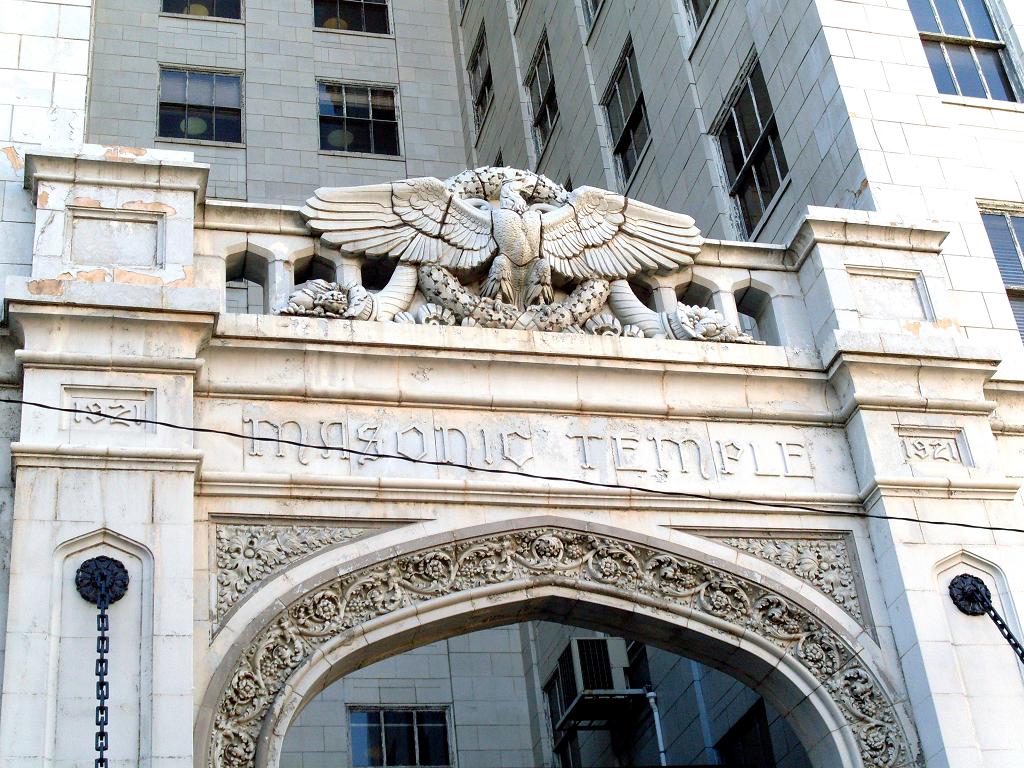The history of Freemasonry begins with stonemasons during the Middle Ages. That’s when the guilds established a series of handshakes, passwords, and other secret symbols to protect their trade secrets and prove their credentials. From there, many of these early Masons organized themselves into Masonic “lodges” to take care of one another and their families in case of injury or death.
By the 17th century, these lodges had transformed from groups of literal stonemasons into what’s called “Speculative” Masons. Members of these lodges, called Freemasons, gathered to learn a series of moral teachings.
In 1717, four of these lodges came together in London to form the first “grand lodge” in the world. Masons eventually formed grand lodges in Ireland and Scotland, then the rest of Europe. Before long, Masons had established lodges all around the world.

Freemasonry’s history and traditions date back more than 300 years. Many are known to the public—for instance, the laying of the cornerstone of a new civic building (as seen here, in 1957 in San Francisco’s Portsmouth Square). Only members are allowed to know some of the others, such as the secret ritual used to admit and progress candidates.
Within each lodge, though, you’ll notice a few constants:
The Masonic square and compass is the most common symbol in Masonry, used to represent Freemasons and Masonic lodges around the world. The square and compass are two of the tools that ancient stonemasons used to work stone. But to modern Freemasons, they’re symbols for building character. The letter “G” at the center stands for geometry, the basis for stonemasonry—and, symbolically, modern Freemasonry
Masons play an enormous role in California history. Freemasonry first came to California during the gold rush. As people poured into the state from all around the world, many brought with them charters from Masonic lodges back home. Once here, they formed into small campside lodges—often among the first institutions in the new towns of gold country (such as Harmony Lodge No. 164, chartered in 1864 in Sierra City, seen here).
The Grand Lodge of California was established in Sacramento in 1850, a few months before California became a state. A decade later, California Freemasonry had more than 5,000 members, and lodges up and down the state. Many of the leaders of early California counted themselves among its members.
The California Masonic Memorial Temple, in San Francisco, is the home of the Grand Lodge of California. It’s where members of the fraternity gather for their annual meeting and convention. It also serves as headquarters for the administrative staff and houses the Henry Wilson Coil Library and Museum of Freemasonry. In addition to Masonic uses, the building houses the SFMasonic, a concert and events venue.
The California Masonic Memorial Temple is impossible to miss. The white marble building, which was built in 1958, is an icon of midcentury architecture. Its exterior features a 12-foot-high frieze depicting the four branches of the armed forces. On the inside, there’s an even bigger surprise: a 38- by 48-foot endomosaic mural depicting the history of Freemasonry in California by artist Emile Norman.
Freemasons share a desire to make the world a better place. So it’s no surprise that the list of famous Freemasons is long and varied. Here are just a few you might recognize.
Founding fathers like George Washington, Benjamin Franklin, and Miguel Hidalgo
Civil rights leaders including Booker T. Washington, Medger Evers, and John Lewis
Explorers Davey Crockett, Charles Lindbergh, and Buzz Aldrin
Musicians Johann Sebastian Bach, Wolfgang Amadeus Mozart, and William “Count” Basie
Writers Oscar Wilde, Mark Twain, and Ernest Hemingway
Athletes “Sugar” Ray Robinson, Jack Dempsey, and Scottie Pippin
Entertainers and actors including John Wayne, Harry Houdini, and Brad Paisley
Business leaders Henry Ford, Charles Hilton, and Colonel Harland Sanders
Today, the Masons of California include approximately 40,000 members spread across some 332 lodges in practically every part of California. They include business owners, artists, students, doctors, lawyers, accountants, engineers, first responders, members of the armed forces, and just about everything in between.
Learn more about the fraternity and Masonry today by subscribing to our quarterly magazine, California Freemason. A digital-only subscription is free and will be emailed to you with each new issue.
And to learn more about membership, sign up to be connected to a lodge in your area.
Our secret isn’t ancient rituals or secret ceremonies. It’s our members. Meet some of them here. Our members come from all backgrounds and all walks of life. The average age of new members is about 36..
While the Masons of California represents the largest Masonic organization in the state, it isn’t the only one.
WhatsApp us